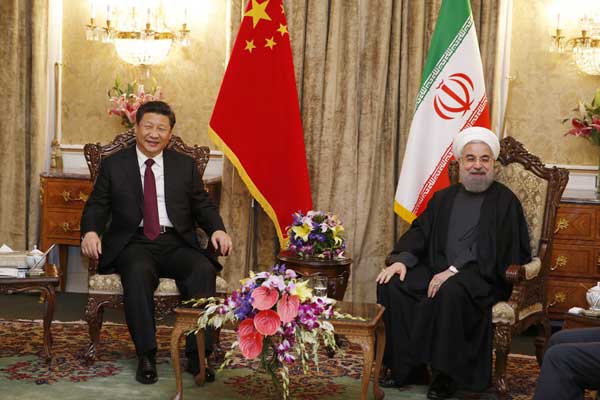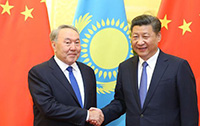Xi's whirlwind diplomacy sweeps China to center stage
(Xinhua) Updated: 2016-01-29 03:56
 |
|
Chinese President Xi Jinping (left) talks with Iranian President Hassan Rouhani in Tehran, Iran, Jan 23, 2016. [Photo by Ju Peng/Xinhua] |
They also agreed on their desire for a relationship with "no conflict or confrontation, win-win cooperation and mutual respect."
"The vast Pacific Ocean is big enough to accommodate both China and the United States," Xi told Obama during his US visit last September.
Former US Secretary of State Henry Kissinger calls the new texture of relations far-sighted and in the interests of both sides. Harvard professor Joseph Nye, also believes the Thucydides Trap can be avoided if the two treat each other objectively and rationally.
The diplomatic success between China and these major powers testifies to the fact that harmony and balance can indeed be attained through a new type of major-country relationship.
A GOOD NEIGHBOR IS NOT TO BE TRADED FOR GOLD
Neighborhood diplomacy features another important pillar for China's diplomatic layout.
China tops the world in the number of neighboring countries. It shares land borders with 14 and maritime boundaries with six.
A sound and stable neighborhood translates to real benefits for everyone involved.
"A good neighbor is not to be traded for gold," Xi famously said in 2013, as he put forward four guiding principles for neighborhood diplomacy: amity, sincerity, mutual benefit and inclusiveness.
It only takes one look at Xi's itinerary to grasp the significance he pins on neighborhood diplomacy -- half of his foreign visits have been to neighboring countries, where he has repeatedly stressed that the Chinese dream is connected to the aspirations of neighbors who also want a better life, nurturing the sense of a community of common destiny.
"Welcome aboard China's train of development," Xi said in another trip to Mongolia in 2014, offering opportunities and room to China's neighbors for common prosperity.
To make such community a reality, China has proposed a series of ideas for regional prosperity and development, most notably the Belt and Road Initiative, which first saw light of day in 2013.
A trade and infrastructure network connecting Asia with Europe and Africa along the ancient Silk Road routes and across the oceans, something almost unimaginable only two an half years ago is now tantalizingly close to realization.
So far, more than 60 countries and international organizations have expressed interest in active involvement in this grand vision, and a number of major cooperative projects are underway.
Formally established last month, the Asian Infrastructure Investment Bank (AIIB) is another concrete manifestation of Xi's vision of connectivity across Asia.
It took just two years for the bank to develop from an embryonic idea to a fully-fledged body of 57 nations tasked with financing infrastructure across the continent.




